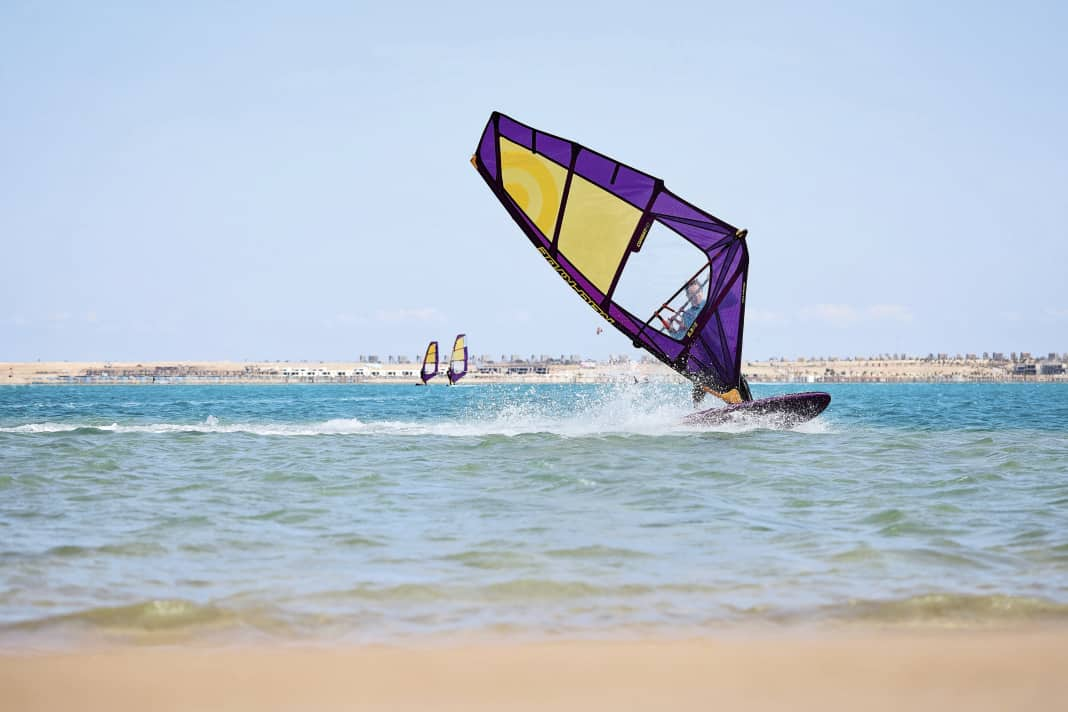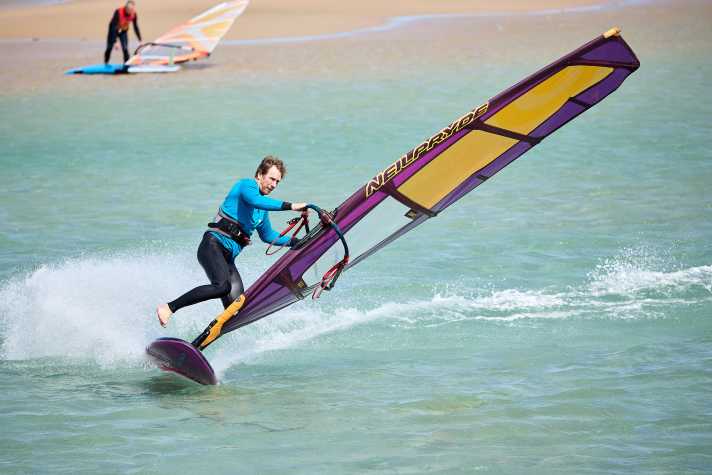





The monkey jibe is a fun, yet technically demanding jibe variant. Not to be confused with its animal relative, the donkey jibe, in which you jibe the sail like a duck jibe right from the start. Once you get the hang of it, this fluid manoeuvre, which is not seen all that often, will quickly draw a cheer or two - and not just from the astonished audience. After all, this jibe is by no means silly or something to boast about. The monkey jibe is a real challenge and the sense of achievement is correspondingly high.
The smoother the water, the higher the success rate. You shouldn't necessarily be overpowered for a monkey jibe either.
The smoother the water, the higher the success rate. You shouldn't necessarily be overpowered either; moderate pressure with sufficient speed on water that is as flat as possible are the ideal training conditions. Freestyle or wide freemove boards paired with camberless sails of around five square metres are best for practising. Have fun with it.
Other jibing variants:
The most common mistakes with the monkey jibe
Key point 1: Introduction

When the front foot leaves the loop to position itself in front of the base plate, a solid stance with a slightly bent knee on the back leg and a certain board feel is required. Gliding through the turn without loop contact can be unfamiliar at the beginning and can lead to the odd drop. Tip: Initially, keep your weight mainly on your back leg. If you put too much weight on the nose when gliding at full speed, the board will brake unusually hard and there is a risk of flying forwards.
Key point 2: absorbing pressure




As you step round the base plate and pull the outhaul through the wind, back pressure is suddenly created in the sail at a certain point. You should be prepared for this by stretching your arms and shifting your weight over the tail, otherwise you will quickly be thrown off in the direction of travel. Gliding backwards and back through the jibe (Fig. 3) is the coolest feeling during the monkey jibe. Preliminary exercises such as the clew first helitack can provide the necessary sailing feeling here and also help with the outhaul.
